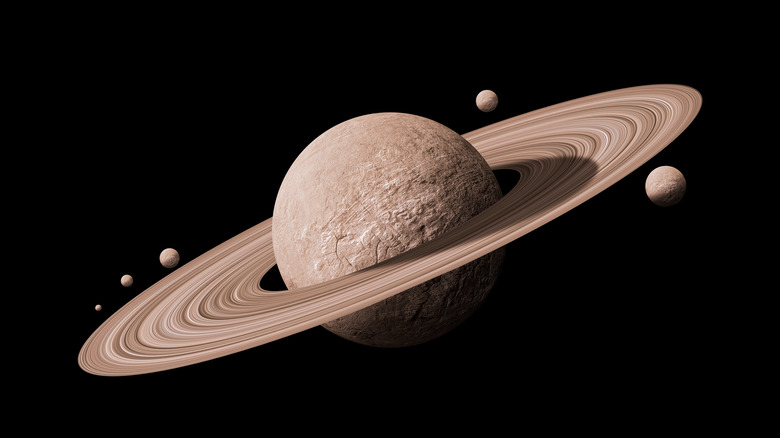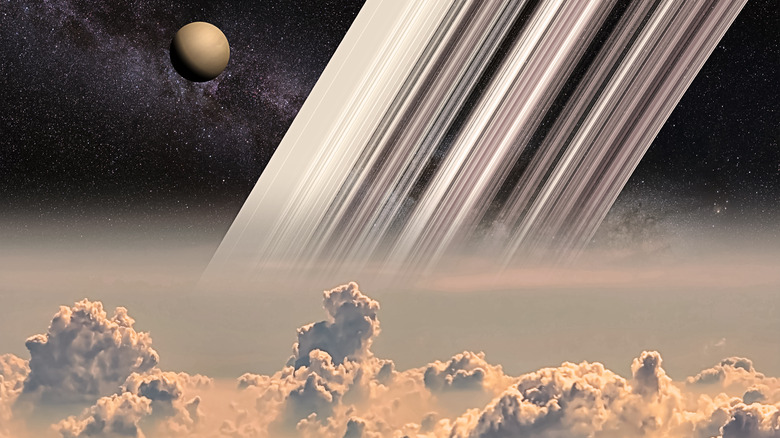This Planet Has The Most Moons In The Entire Solar System
Fun fact: of all the moons of all the planets in the solar system, Saturn's Titan is the only one that scientists have observed to have an atmosphere. However, you won't see Jeff Bezos buying a cozy villa there like some kooky character out of a Philip K. Dick novel any time soon. According to Space.com, so much of that atmosphere is made up of methane that it sometimes falls as rain in liquid form. Not the best environment for human life, but still high on the list of possible homes of some kind of life. Larger than the planet Mercury, Titan comprises a whopping 96 percent of the mass of the all the satellites and rings orbiting Saturn.
Such dimensions may sound surprising when you also hear that NASA's most recent count of Saturn's moons is 82. Some of those moons actually plow through the planet's rings, leaving gaps in their wakes. Sixteen of Saturn's moons orbit as tidally locked satellites, meaning that — like Earth's Moon — the same hemisphere is always facing the planet. Humans spotted the first moon of Saturn in 1655, and seven more were found in the following two centuries. We had mapped 18 moons by 1997, but it wasn't until telescope advances and the Cassini mission in the 21st century that we discovered the other dozens of moons orbiting it.
The Cassini mission actually landed on the surface of Saturn's moon Titan
There are a few theories as to how Saturn's moons formed. Space.com notes that some scientists believe that there were actually two Titan-sized moons at one point, and that the other one broke apart for some reason, the debris forming the rest of the planet's satellites. A contrary theory postulates that Saturn's orbit was home to several fairly large moons, two of which ended up fusing together to form Titan.
To help try and solve these and other mysteries of the gigantic moon, the Cassini mission actually landed a probe to land on the surface of Titan in 2005, and what they learned about it was truly mind-blowing, enough for NASA to call Titan a "remarkably Earth-like world." They discovered lakes and vast seas of liquid methane, and evidence suggested that the moon has a large liquid sea of water and ammonia beneath its surface, as well. Scientists have also observed sinkholes on its surface. But despite the wealth of information the Cassini mission provided, we still have so much more to learn about Saturn's numerous and diverse moons.

